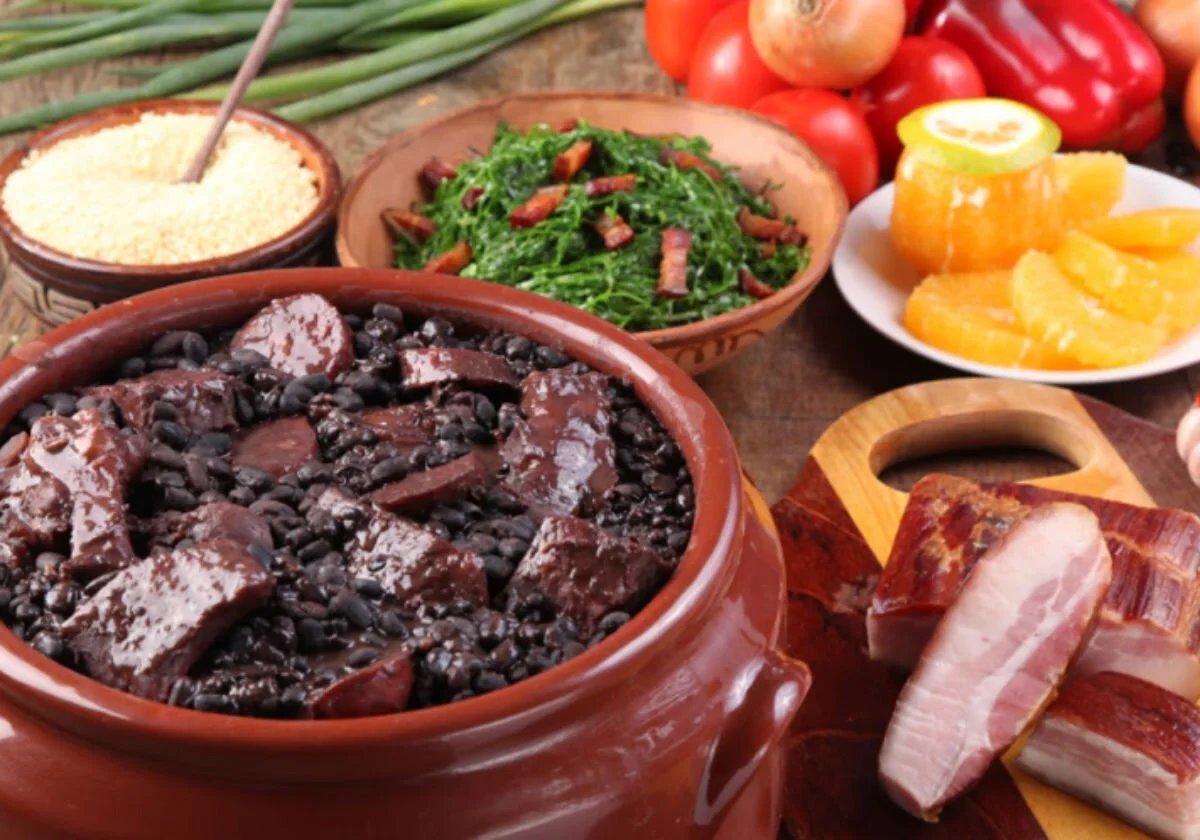Feijoada: Historical dish, the most classic brasilian meal.
Feijoada or feijoada completa is Brazil's national dish, a hearty stew featuring pork and black beans. The dish is consumed throughout the country, and every family in Brazil has their own, special recipe. Sautéed greens, cheese rolls, rice, and fresh, sliced oranges are served as an accompaniment to the smoked pork and richly flavored black beans.
Depending on the region of Brazil the type of bean used in feijoada varies. While in some regions like Rio de Janeiro or Minas Gerais feijoada is typically prepared with black beans, in Goias and Bahia brown or red beans are more commonly used.
As a celebratory dish, feijoada is traditionally served on Saturday afternoons or Sunday lunch and intended to be a leisurely midday meal. It is meant to be enjoyed throughout the day and not eaten under rushed circumstances. The meal is usually eaten among extended family and paired with an event like watching a football game or other social event. Because of the dish's heavy ingredients and rich flavors, feijoada is viewed as Brazilian soul food. In the city of São Paulo, feijoada is a typical dish in working-class restaurants on Wednesdays and Saturdays, mainly in the commercial area. In Rio de Janeiro, restaurants traditionally serve it on Fridays.The dish is normally served with a choice among a selection of meats, e.g. pork, bacon, pig ears, pig feet, to fulfill the customer’s needs. Other variations of feijoada, such as the low fat version or the vegetarian.
According to legend, the origins of Brazil’s national dish, feijoada, stem from its history with slavery. Slaves would supposedly craft this hearty dish out of black beans and pork leftovers given to them from their households. These leftovers included pig feet, ears, tail, and other portions seen as unfit for the master and his family. . In contrast, the poor and enslaved usually ate a mixture of black beans and manioc flour. Traditionally, it is prepared for Saturday lunch, so that the consumers may sleep it off. The beans are flavored with onions, tomatoes, coriander, and garlic, while pork meat can be additionally enriched with dried beef and smoked pork sausages.
Before the main meal, consumers are offered caldinho de feijao, a bean broth served in shot glasses or small ceramic cups and garnished with pork rinds known as torresmos. The name feijoada is derived from the Portuguese word for beans, feijão, and it probably originated in the 1600s in Recife, on sugar plantations built by the Portuguese colonists, although some believe that it was created in Rio de Janeiro.
The Brazilian version usually uses black beans, while the Portuguese one typically uses white or kidney beans. Feijoada is artfully displayed on platters full of ingredients, so that the consumers may choose their favorites and enjoy them at a leisurely pace.
The meats are sliced and placed on platters; the beans served in large serving bowls, and the accompaniments include Brazilian rice, kale, cassava with butter or hard-boiled eggs, sliced oranges, and hot pepper-lime sauce. During the meal,cachaca, a sugarcane brandy and Brazil's most popular liquor, is served as a traditional accompaniment to feijoada.

